
BUSINESS
Kimberly-Clark Corporation, together with its subsidiaries, manufactures and markets personal care and consumer tissue products worldwide. It operates through three segments: Personal Care, Consumer Tissue, and K-C Professional. The Personal Care segment offers disposable diapers, swimpants, training and youth pants, baby wipes, feminine and incontinence care products, and other related products under the Huggies, Pull-Ups, Little Swimmers, GoodNites, DryNites, Sweety, Kotex, U by Kotex, Intimus, Depend, Plenitud, Softex, Poise, and other brand names. The Consumer Tissue segment provides facial and bathroom tissues, paper towels, napkins, and related products under the Kleenex, Scott, Cottonelle, Viva, Andrex, Scottex, Neve, and other brand names.

INVESTMENT RATING

With future capital returns forecasted to exceed the cost of capital, KMB is expected to continue to be a major Value Builder.
Kimberly-Clark has a current Value Trend Rating of C (Neutral).
The Value Trend Rating reflects contradictory signals from PTR’s two proprietary measures of a stock’s attractiveness. Kimberly-Clark has a slightly positive Appreciation Score of 70 but a slightly negative Power Rating of 32, and the Neutral Value Trend Rating results.
Kimberly-Clark’s stock is selling well below targeted value. The current stock price of $124.47 compares to targeted value 12 months forward of $220.
This high appreciation potential results in an appreciation score of 70 (only 30% of the universe has greater appreciation potential.)
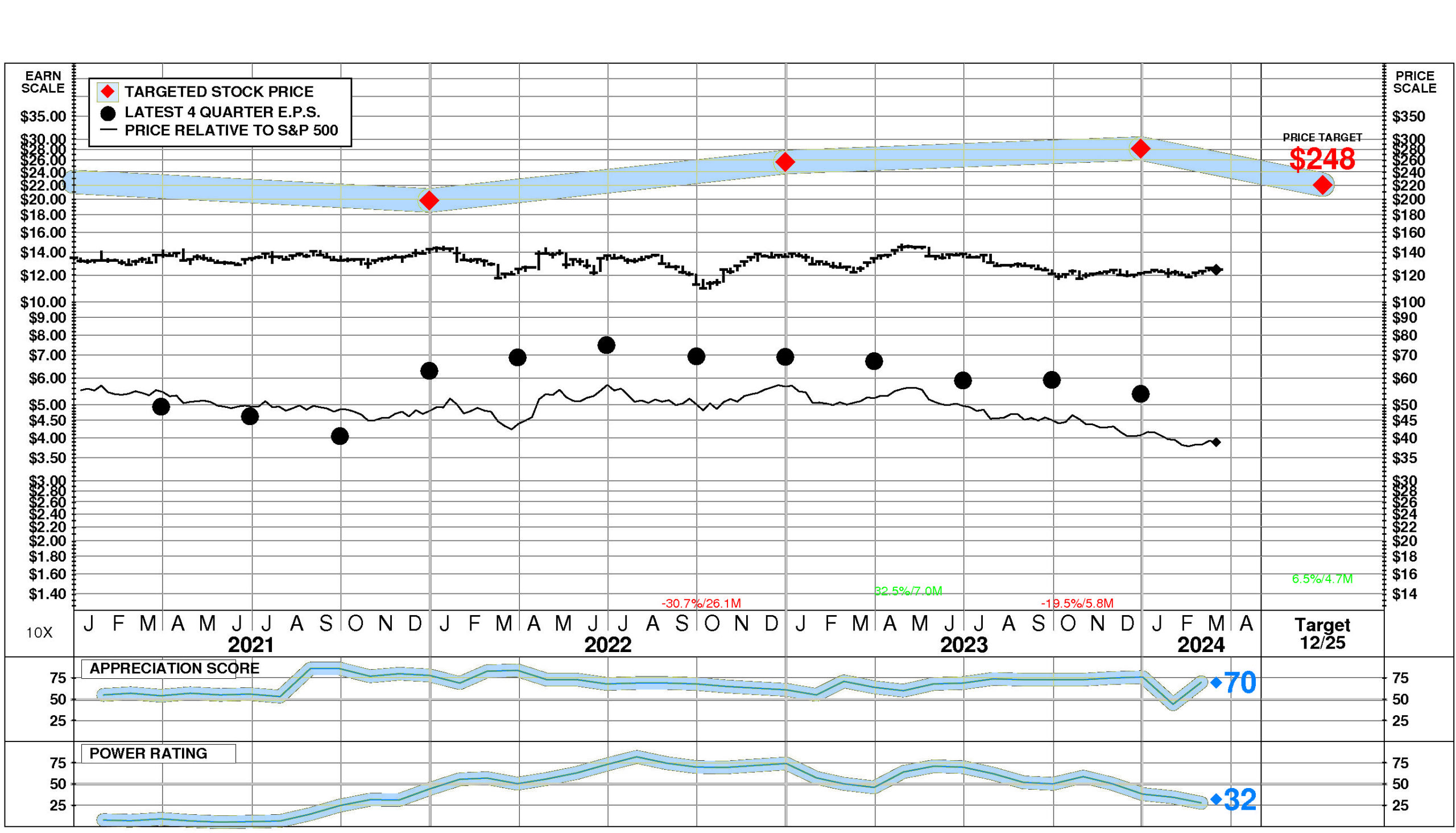
Kimberly-Clark has a Power Rating of 32. (This slightly negative Power Rating indicates that KMB only has a better chance of achieving attractive investment performance over the near to intermediate term than 32% of companies in the universe.)
Factors contributing to this slightly negative Power Rating include: the Paper Mills comparison group is currently in an unfavorable position; recent price action has been slightly unfavorable; and earnings estimate behavior for KMB has been slightly negative recently.
INVESTMENT PROFILE
KMB’s financial strength is average. Financial strength rating is 52.
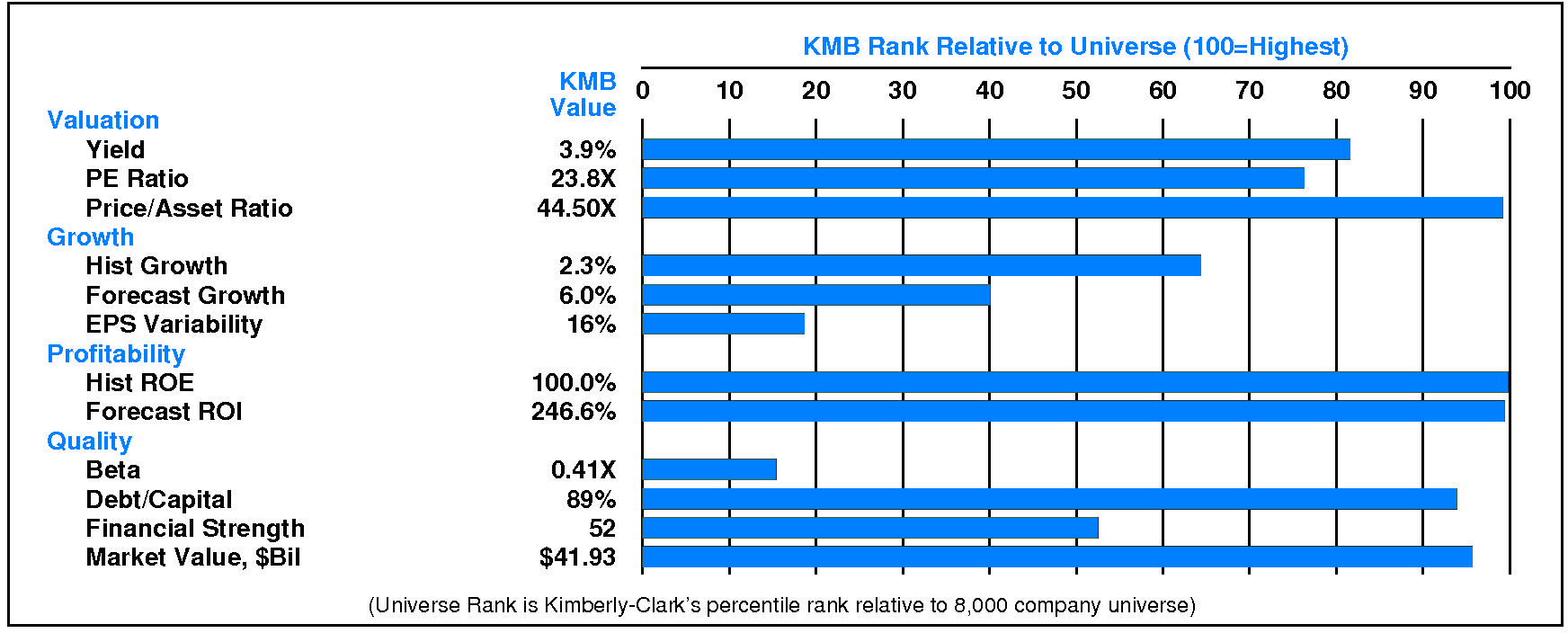
Relative to the S&P 500 Composite, Kimberly-Clark Corp has slightly more Growth than Value characteristics; its appeal is likely to be to investors neutral towards Income; the perception is that KMB is normal risk. Relative weaknesses include: low financial strength, high financial leverage, low expected growth, and low historical growth. KMB’s valuation is moderate: high dividend yield, moderate P/E ratio, and high price/book ratio. KMB has normal market capitalization.
CURRENT SIGNALS
Kimberly-Clark’s current operations are eroding. Return on equity is falling, reflecting: declining pretax margin; and falling leverage.
Kimberly-Clark’s current technical position is very weak. The stock price is in a 5.8 month down move. The stock has declined 16.3% from its prior high. The stock price is below its 200 day moving average which is in a downtrend.
ALERTS
Important negative changes in Kimberly-Clark Corp (NYSE: KMB) investment behavior have recently occurred: the stock fell on very heavy volume.
The stock is currently rated C.
Kimberly-Clark Corp (NYSE: KMB) stock closed at $124.47 on 3/15/24 after a slight decline of -0.3%. Moreover, trading volume in this decline was exceptionally high at 301% of normal. The stock has been weak relative to the market over the last nine months and has declined -1.1% during the last week.
CASH FLOW
In 2023, Kimberly-Clark generated a very significant increase in cash of +$666 million (+156%). Sources of cash were much larger than uses. Cash generated from 2023 EBITDA totaled +$3,854 million. Non-operating uses consumed -$591 million (-15% of EBITDA). Cash taxes consumed -$726 million (-19% of EBITDA). Withdrawal of investment from the business totaled +$284 million (+7% of EBITDA). On a net basis, debt investors received -$759 million (-20% of EBITDA) while equity investors removed -$1,396 million (-36% of EBITDA).
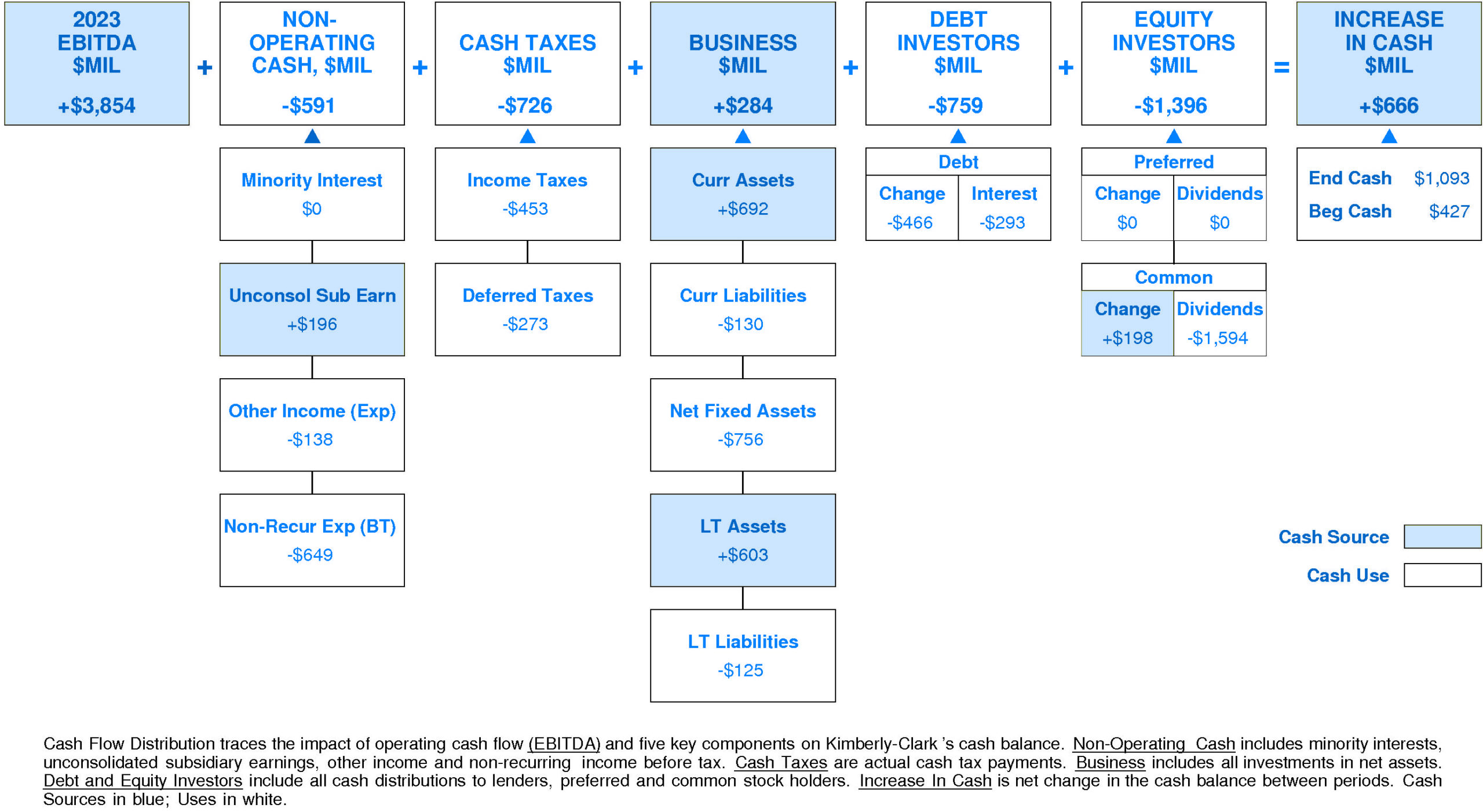
Kimberly-Clark’s Non-operating Income, %EBITDA has exhibited a volatile overall uptrend over the period. This improvement was accompanied by a similar trend for the Kimberly-Clark Peer Group. In most years, Kimberly-Clark was in the third quartile and top quartile. Currently, Kimberly-Clark is lower quartile at -15% of EBITDA (-$591 million).
Kimberly-Clark’s Cash Taxes, %EBITDA has exhibited a volatile overall uptrend over the period. This improvement was accompanied by a similar trend for the Kimberly-Clark Peer Group. (Since 2020 Cash Taxes, %EBITDA has experienced a sharp decline.) In most years, Kimberly-Clark was in the second quartile and top quartile. Currently, Kimberly-Clark is at the lower quartile at -19% of EBITDA (-$726 million).
Kimberly-Clark’s Business Re-investment, %EBITDA has suffered a volatile overall downtrend over the period. This downtrend was accompanied by a similar trend for the Kimberly-Clark Peer Group. (Since 2020 Business Re-investment, %EBITDA has experienced a very sharp recovery.) In most years, Kimberly-Clark was in the top quartile and second quartile. Currently, Kimberly-Clark is upper quartile at +7% of EBITDA (+$284 million).
Kimberly-Clark’s Debt Investors, %EBITDA has experienced a strong overall downtrend over the period. This downtrend was accompanied by a similar trend for the Kimberly-Clark Peer Group. (Since 2020 Debt Investors, %EBITDA has accelerated sharply.) In most years, Kimberly-Clark was in the second quartile and third quartile. Currently, Kimberly-Clark is slightly above median at -20% of EBITDA (-$759 million).
Kimberly-Clark’s Equity Investors, %EBITDA has enjoyed a very strong overall uptrend over the period. This improvement was accompanied by a similar trend for the Kimberly-Clark Peer Group. (Since 2021 Equity Investors, %EBITDA has stabilized.) In most years, Kimberly-Clark was in the third quartile and second quartile. Currently, Kimberly-Clark is below median at -36% of EBITDA (-$1,396 million).
Kimberly-Clark’s Change in Cash, %EBITDA has exhibited a minor overall uptrend over the period. This improvement was accompanied by stability for the Kimberly-Clark Peer Group. (Since 2020 Change in Cash, %EBITDA has sharply accelerated.) In most years, Kimberly-Clark was in the top quartile and lower quartile. Currently, Kimberly-Clark is upper quartile at +17% of EBITDA (+$666 million).
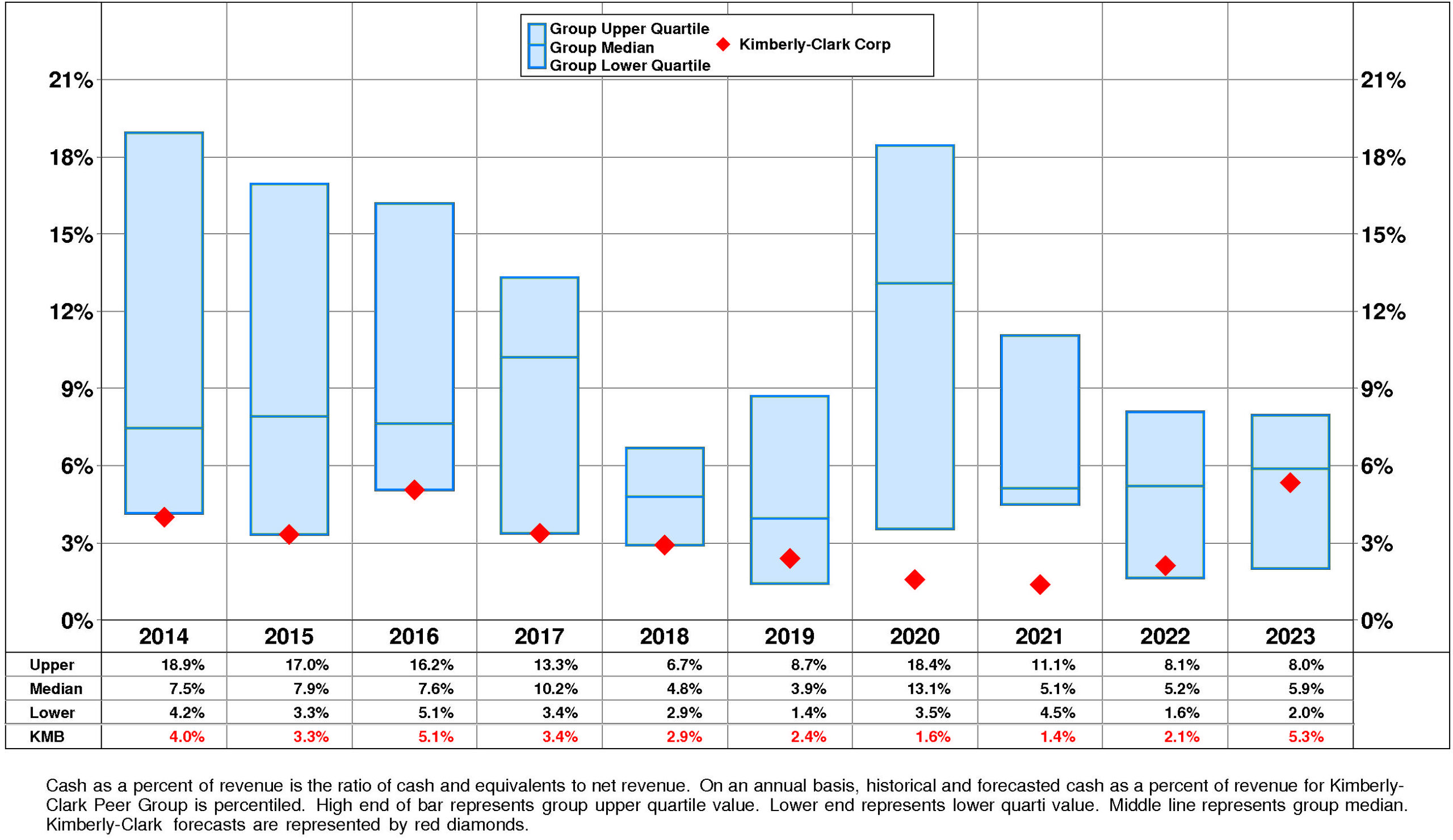
Kimberly-Clark’s Cash, %Revenue has exhibited little to no overall change over the period. This stability was accompanied by stability for the Kimberly-Clark Peer Group as well. In most years, Kimberly-Clark was in the third quartile and lower quartile. Currently, Kimberly-Clark is slightly below median at +5%.
PROFITABILITY
Kimberly-Clark’s return on equity has improved very significantly since 2014. The current level is 192.8% versus the high of 202.5% and the low of -582.%.
A major analytical focus for KMB is a minor negative trend in pretax operating return significantly offset by a very strong positive trend in non-operating factors.
The productivity of Kimberly-Clark’s assets declined over the full period 2014-2023: asset turnover has experienced a minor downtrend.
Additionally, pretax margin has exhibited little to no overall change although it experienced a very sharp decline from the 2020 level.
Non-operating factors (income taxes and financial leverage) had a very significant positive influence on return on equity.

Kimberly-Clark’s return on equity is substantially above median (192.8%) for the four quarters ended December, 2023.
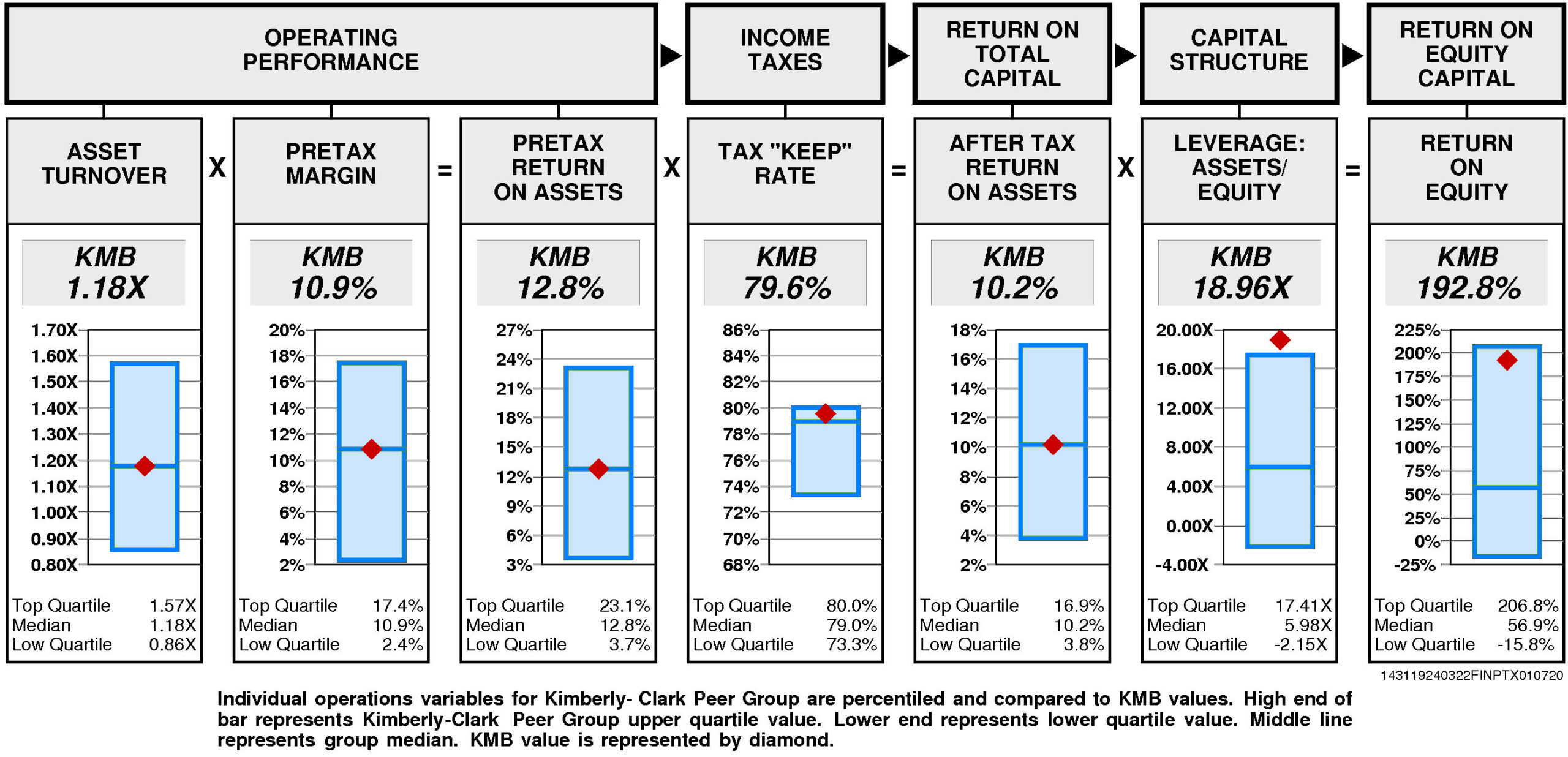
Operating performance (pretax return on assets) is at median (12.8%) reflecting asset turnover that is at median (1.18X) and at median pretax margin (10.9%).
Tax “keep” rate (income tax management) is at the upper quartile (79.6%) resulting in after tax return on assets that is at median.
Financial leverage (leverage) is upper quartile (18.96X).
GROWTH RATES
There are no significant differences between Kimberly-Clark’s longer term growth and growth in recent years.
Kimberly-Clark’s historical income statement growth has been in line with balance sheet growth. Revenue growth has paralleled asset growth; earnings growth has paralleled equity growth.
Annual revenue growth has been 1.8% per year.
Total asset growth has been 3.0% per year.
Annual E.P.S. growth has been 5.0% per year.
Equity growth has been 2.4% per year. (More recently it has been 25.2%.)
Kimberly-Clark’s consensus growth rate forecast (average of Wall Street analysts) is 6.0% — above the average of the historical growth measures.
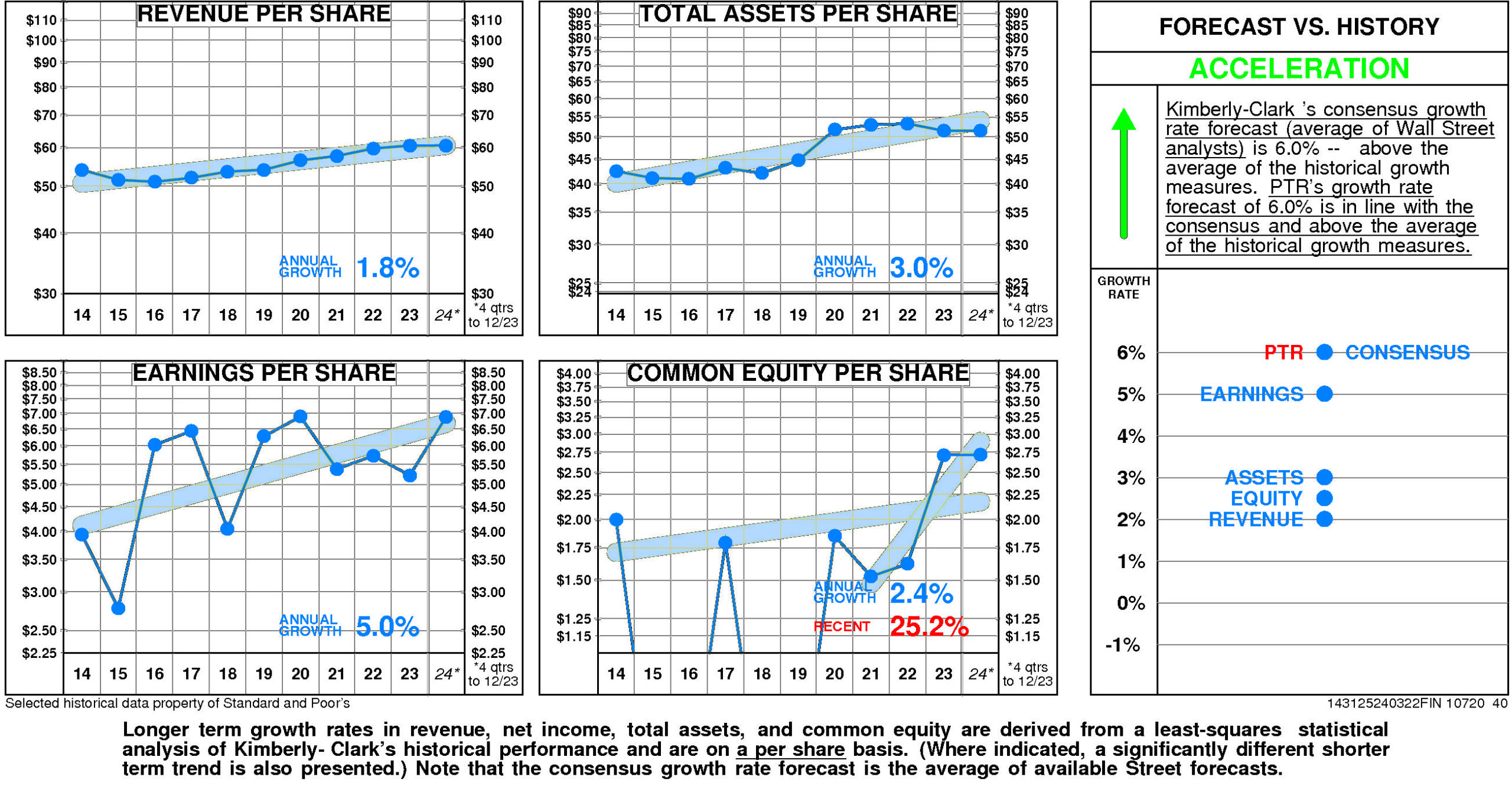
Relative to the Kimberly-Clark Peer Group, Kimberly-Clark’s historical growth measures are erratic. Equity growth (2.4%) has been slightly above median. E.P.S. growth (5.0%) has been substantially below median. Revenue growth (1.8%) has been at the lower quartile. Total asset growth (3.0%) has been lower quartile.
Consensus growth forecast (6.0%) is substantially below median.
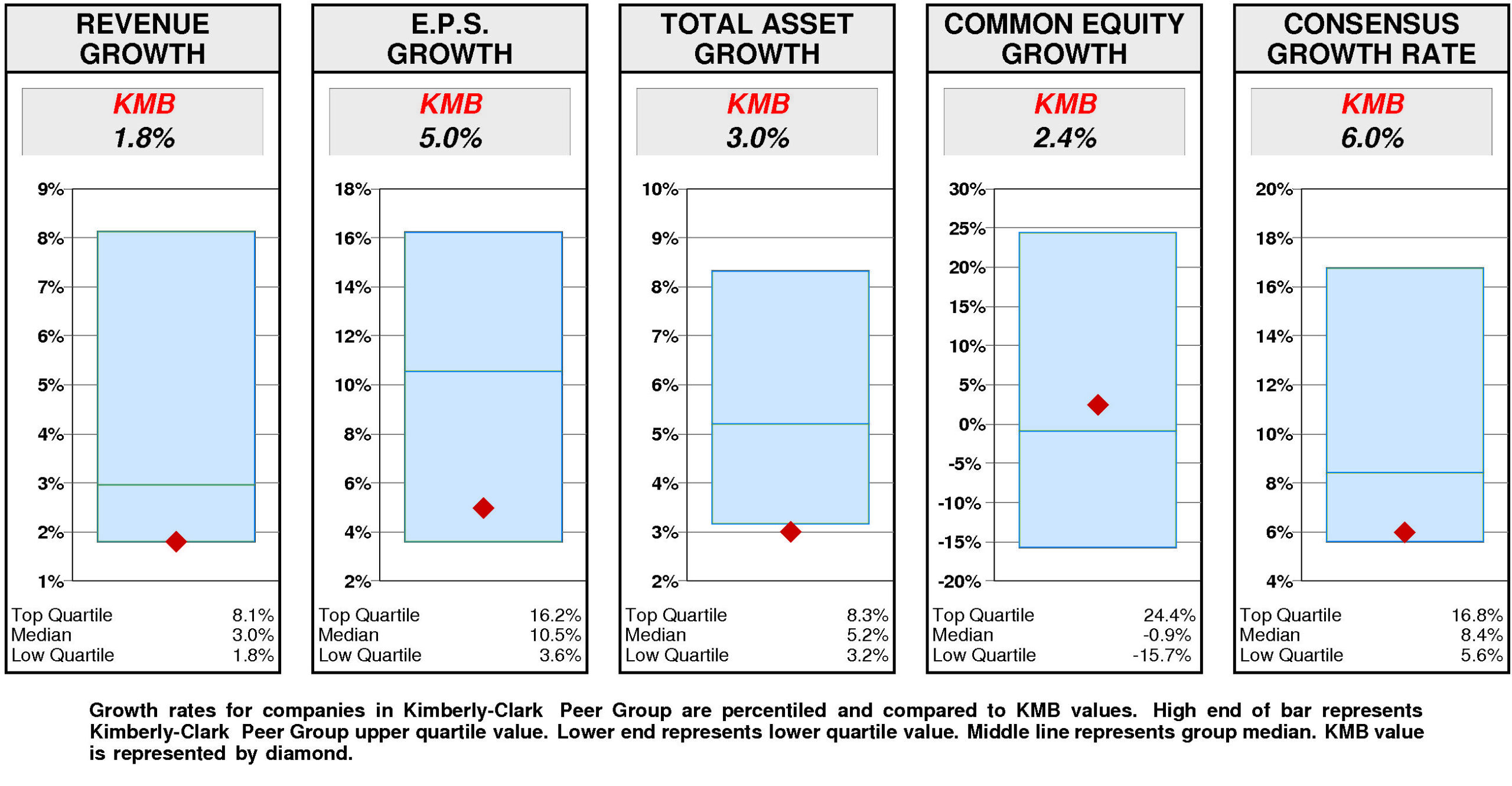
PRICE HISTORY
Over the full time period, Kimberly-Clark’s stock price performance has been significantly below market. Between May, 2013 and March, 2024, Kimberly-Clark’s stock price rose +29%; relative to the market, this was a -59% loss.
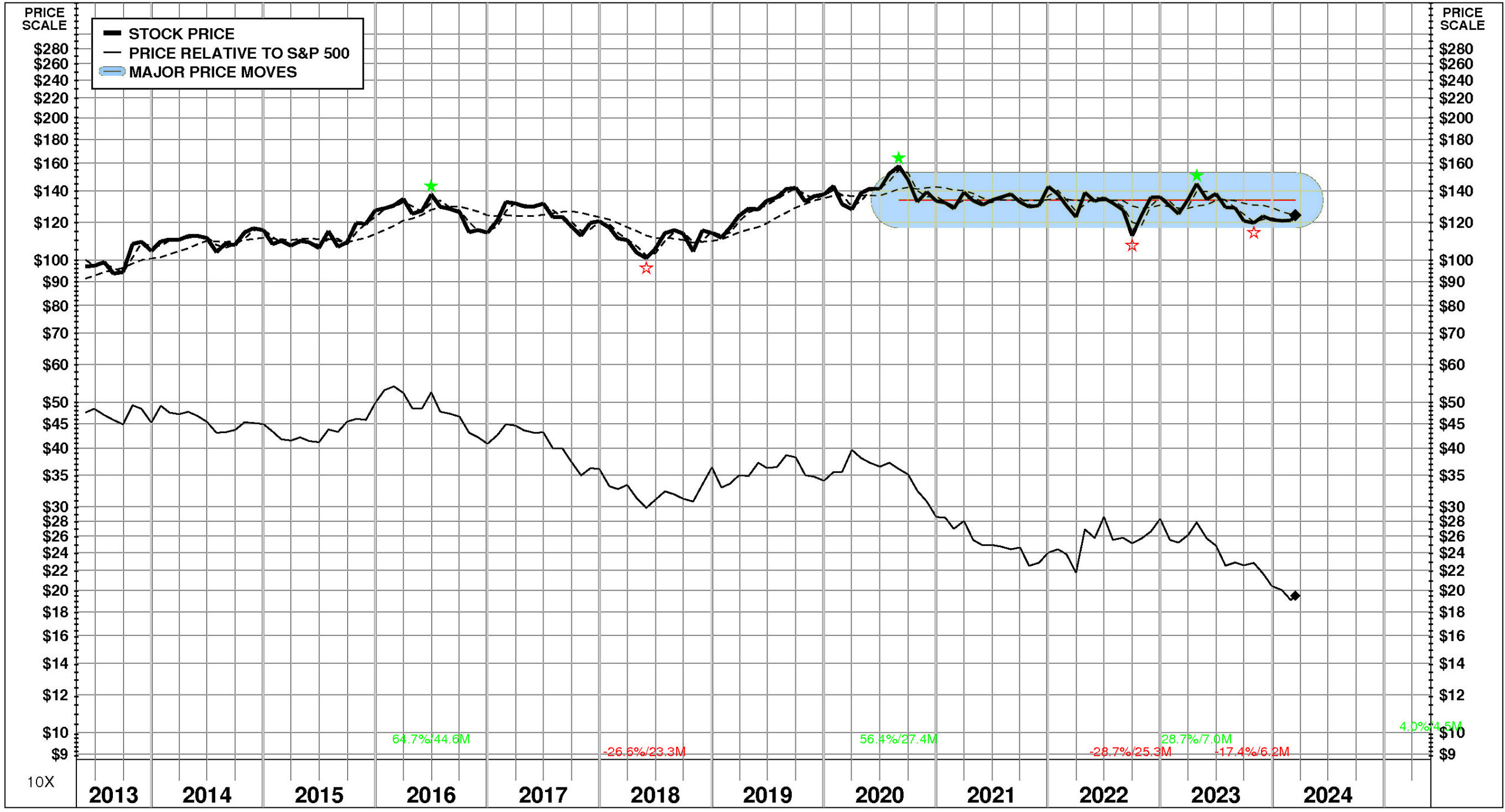
TOTAL INVESTMENT RETURNS
Current annual total return performance of 0.5% is below median relative to the S&P 500 Composite.
In addition to being below median relative to S&P 500 Composite, current annual total return performance through February, 2024 of 0.5% is at median relative to Kimberly-Clark Corp Peer Group.
Current 5-year total return performance of 4.2% is substantially below median relative to the S&P 500 Composite.
Through February, 2024, with substantially below median current 5-year total return of 4.2% relative to S&P 500 Composite, Kimberly-Clark’s total return performance is at median relative to Kimberly-Clark Corp Peer Group.
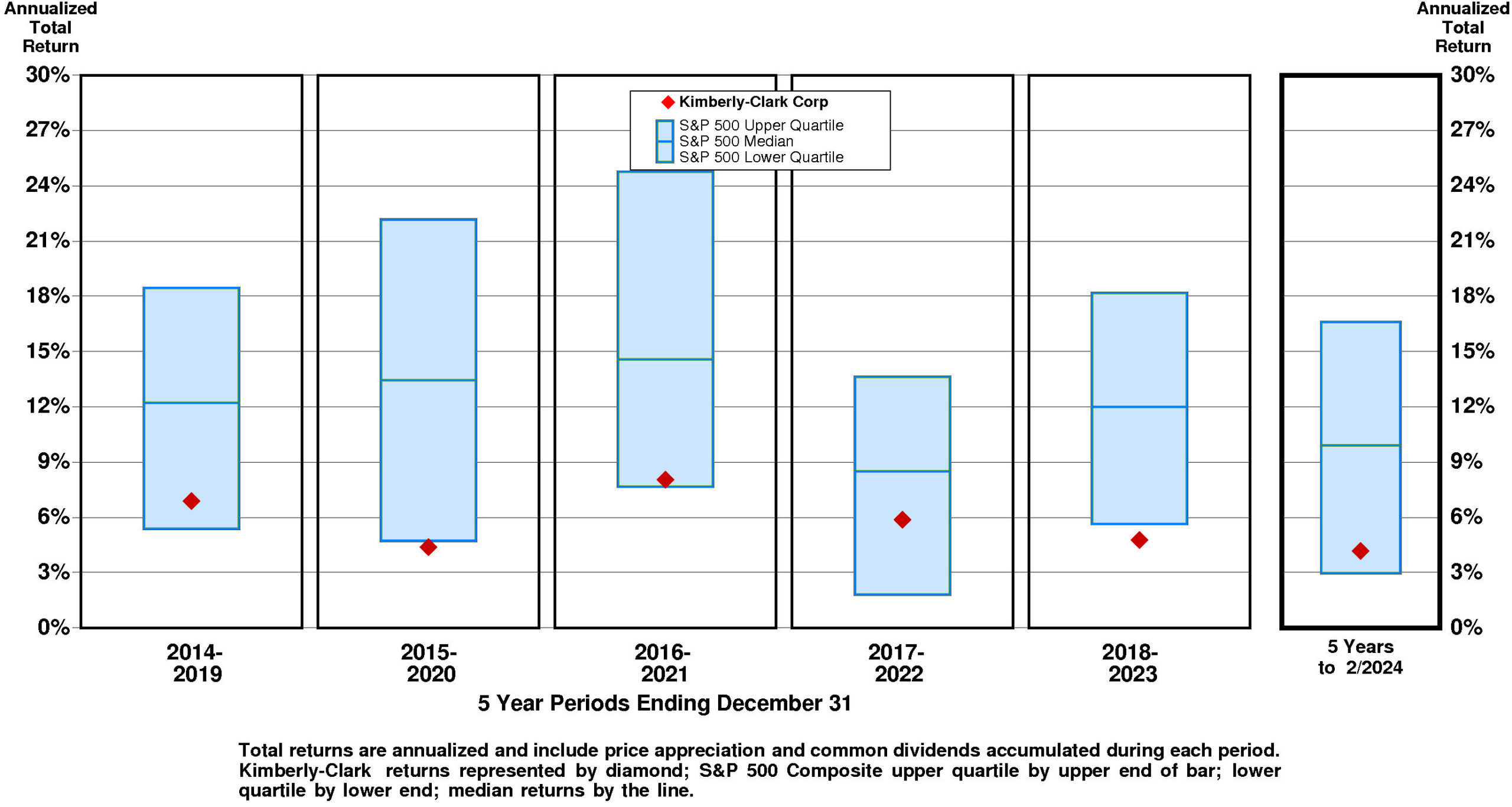
VALUATION BENCHMARKS
Relative to S&P 500 Composite, KMB’s overall valuation is normal. The highest factor, the price/equity ratio, is upper quartile. Ratio of enterprise value/assets is at the upper quartile. Price/earnings ratio is at median. Ratio of enterprise value/earnings before interest and taxes is below median. The lowest factor, the ratio of enterprise value/revenue, is below median.
Relative to Kimberly-Clark Peer Group, KMB’s overall valuation is normal. The highest factor, the price/equity ratio, is above median. Ratio of enterprise value/assets is above median. Ratio of enterprise value/revenue is at median. Price/earnings ratio is at median. The lowest factor, the ratio of enterprise value/earnings before interest and taxes, is near the lower quartile.
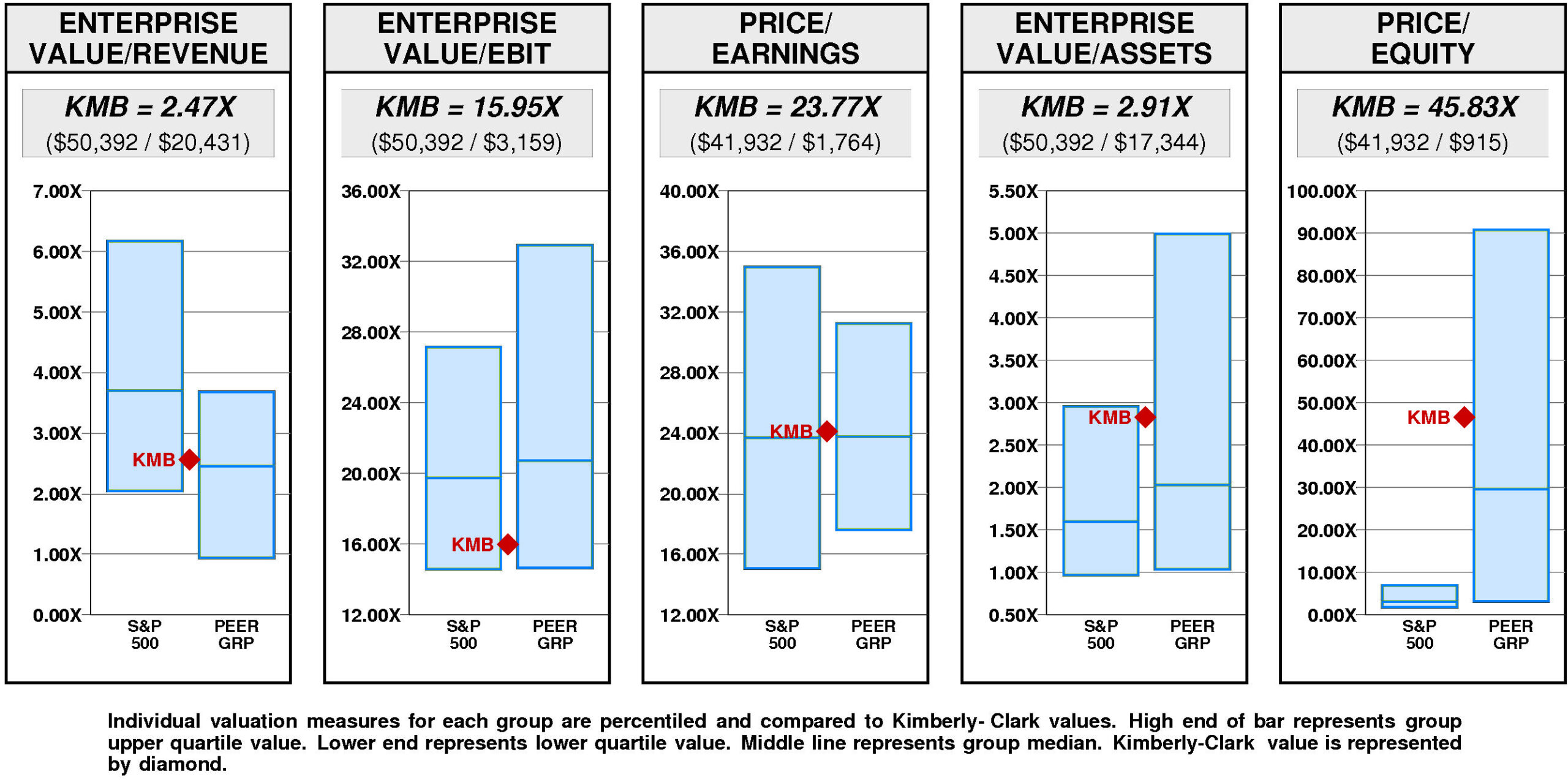
Kimberly-Clark has no value gap compared to the median. For KMB to achieve median valuation, its current ratio of enterprise value/revenue would have to fall from the current level of 2.47X to 2.45X. If KMB’s ratio of enterprise value/revenue were to fall to 2.45X, its stock price would be lower by $-1 to $124.
For KMB to achieve upper quartile valuation relative to the Kimberly-Clark Peer Group, its current ratio of enterprise value/revenue would have to rise from the current level of 2.47X to 3.68X. If KMB’s ratio of enterprise value/revenue were to rise to 3.68X, its stock price would increase by $74 from the current level of $124.
VALUE TARGETS
With future capital returns forecasted to exceed the cost of capital, KMB is expected to continue to be a major Value Builder.
Kimberly-Clark’s current Price Target of $248 represents a +100% change from the current price of $124.47.
This high appreciation potential results in an appreciation score of 70 (only 30% of the universe has greater appreciation potential.)
With this moderately high Appreciation Score of 70, the moderately low Power Rating of 32 results in an Value Trend Rating of C.
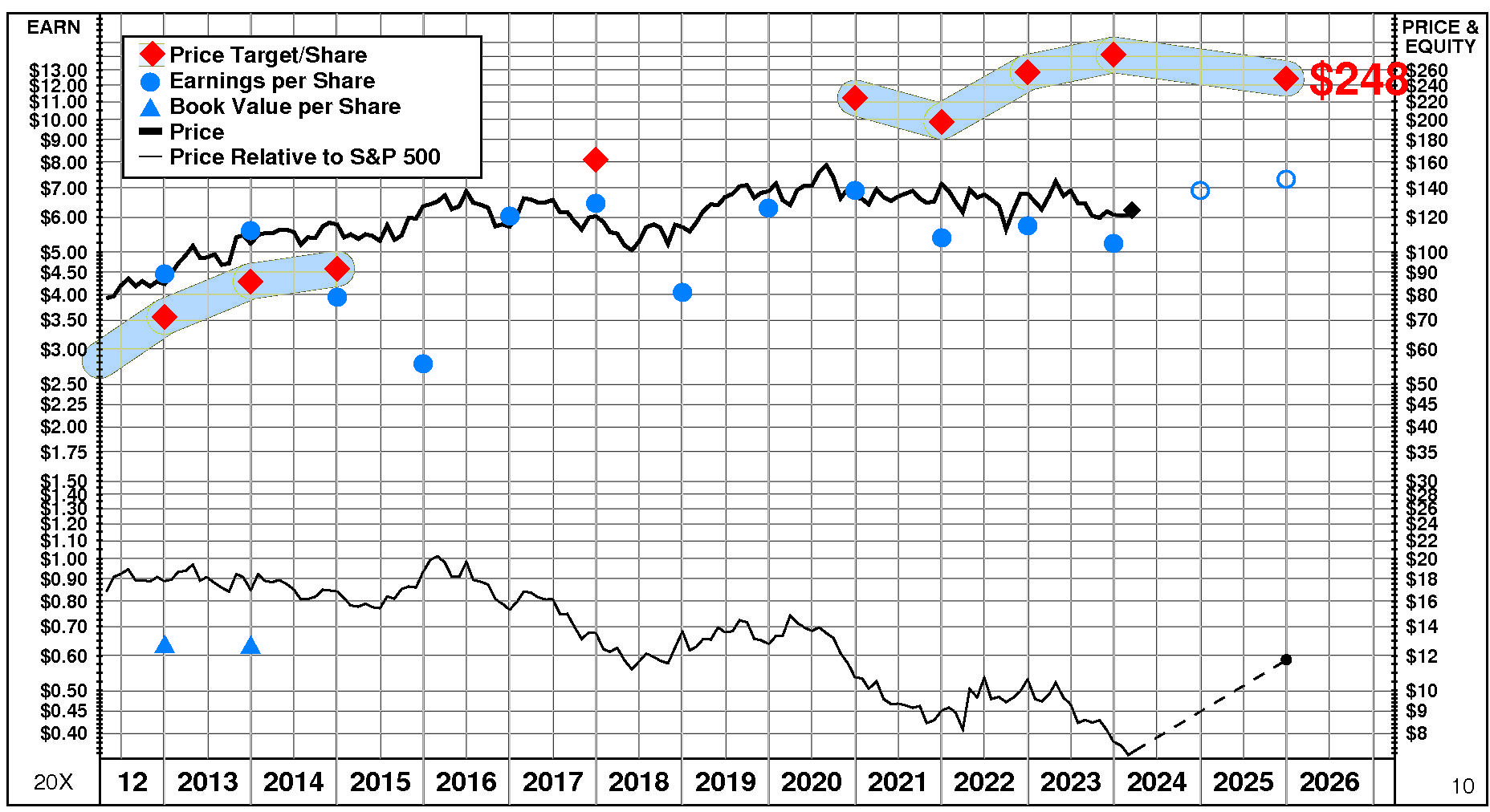
Kimberly-Clark’s current Price Target is $248 (-12% from the 2023 Target of $281 but +100% from the 03/15/24 price of $124.47). This slight fall in the Target is the result of a +4% increase in the equity base and a -15% decrease in the price/equity multiple. The forecasted decline in growth has a large negative impact on the price/equity multiple and the forecasted decline in return on equity has a slight negative impact as well. Partially offsetting these Drivers, the forecasted decline in cost of equity has a very slight positive impact.
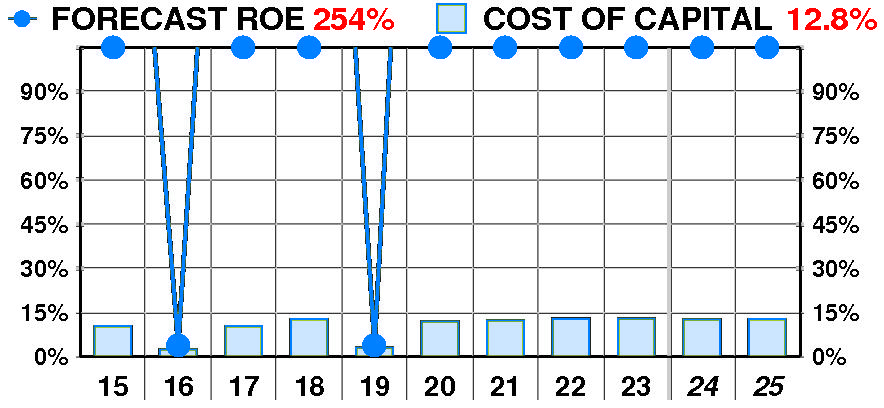

PTR’s return on equity forecast is 254.% — below our recent forecasts. Forecasted return on equity enjoyed a dramatic, erratic increase between 2015 and 2023. The current forecast is significantly above the 2019 low of 4%.
PTR’s growth forecast is 6.0% — slightly below our recent forecasts. Forecasted growth enjoyed a dramatic, steady increase between 2020 and 2023. The current forecast is above the 2020 low of 1%.
PTR’s cost of equity forecast is 12.8% — in line with recent levels. Forecasted cost of equity suffered a dramatic, erratic increase between 2015 and 2023. The current forecast is significantly above the 2016 low of 2.5%.
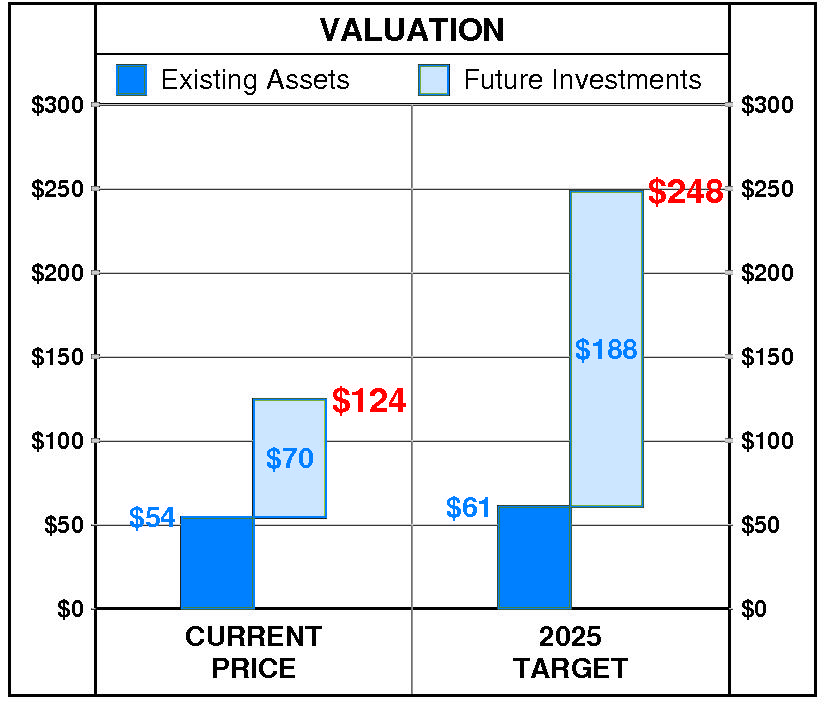
At Kimberly-Clark’s current price of $124.47, investors are placing a positive value of $70 on its future investments. This view is consistent with the company’s most recent performance that reflected a growth rate of 8.0% per year, and a return on equity of 262.3% versus a cost of equity of 13.0%.
PTR’s 2025 Price Target of $248 is based on these forecasts and reflects an estimated value of existing assets of $61 and a value of future investments of $188.

Be the first to comment